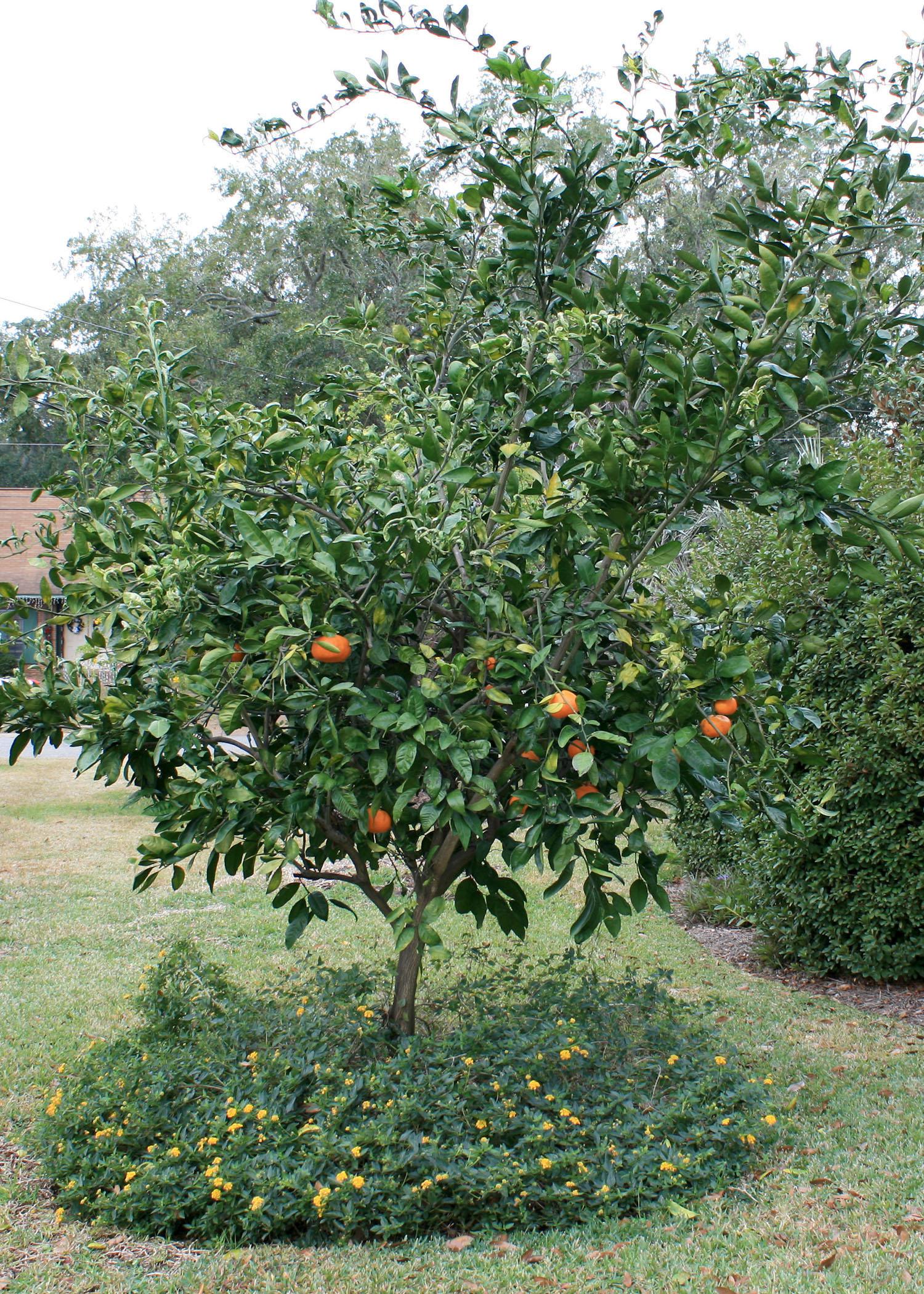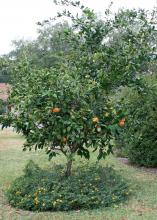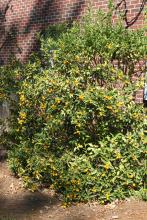Information Possibly Outdated
The information presented on this page was originally released on December 24, 2012. It may not be outdated, but please search our site for more current information. If you plan to quote or reference this information in a publication, please check with the Extension specialist or author before proceeding.
Mississippi gardens can produce fresh citrus fruit
There’s nothing like reaching into the toe of a Christmas stocking under your tree and finding a fresh and tasty satsuma orange that came right from your own garden.
I’d like to say I’ve done that, but so far, all the fresh satsumas I’ve enjoyed have come from my friend Terry’s house. Let me just say that I don’t have to worry about scurvy for a while.
Having enjoyed Terry’s satsumas so much, I just went out and bought the first of what probably will be several Satsuma orange trees that I will own. I’m not the only fan of these oranges. Some of the most popular small fruits grown in Mississippi are the various citrus species.
I wasn’t sure what a satsuma was until I moved to the coast. Satsuma oranges are related to mandarin oranges. These are very juicy fruits with deep-orange rinds that, with practice, can be peeled in one piece.
Satsuma orange trees can produce a lot of tasty fruit. Most home gardeners prune to control the plant size, make harvest easier and keep the plant more manageable. If left unpruned, the branches must be supported to keep the heavy fruit load from damaging the trees.
Other citrus I’m beginning to enjoy are kumquats and Meyer lemons.
Kumquats produce an orange-colored fruit that is 1 to 2 inches in diameter. Before you worry that peeling such a small fruit will be a lot of work, let me point out that you don’t peel kumquats. You eat them peel and all, except for the occasional seed. I find the peel is sweet and contrasts well with the slightly sour inner sections. Kumquat trees produce an abundance of these delicious fruit.
The fruit produced by Meyer lemon trees doesn’t look like the lemons you see in grocery stores. This fruit is actually thought to be a cross between a lemon and an orange. Meyer lemons are large, thin-skinned and very juicy. They are also a little sweeter than true lemons.
The best-producing satsuma plants, as well as other citrus plants, are usually those grafted onto a vigorously growing rootstock that is more tolerant of winter weather. During extreme cold temperatures, where winter protection is not available, home gardeners can have problems with the citrus graft dying.
Sometimes the rootstock may start growing but produce inedible fruit. Other times, the rootstock starts growing and becomes a problem. When this happens, the rootstock typically produces a thorny stem that should be removed.
If your taste buds are telling you to go buy a satsuma tree, I must tell you that unfortunately, their range is limited. Gardeners in coastal counties are the only ones who can grow Satsuma oranges in-ground because of the plant’s sensitivity to cold temperatures.
The good news for gardeners north of the coast is that satsuma oranges, kumquats and Meyer lemons grow and produce well in containers. Growing them in containers gives you more options for providing winter protection, and you can even move the plants indoors during extreme weather.
For more information about growing satsumas and other citrus trees, ask your local county Extension office for a copy of the Extension publication Growing Citrus in Containers in Mississippi. You can also find this online at http://www.msucares.com/pubs/. This is an excellent guide to being successful growing citrus in your garden or landscape.









